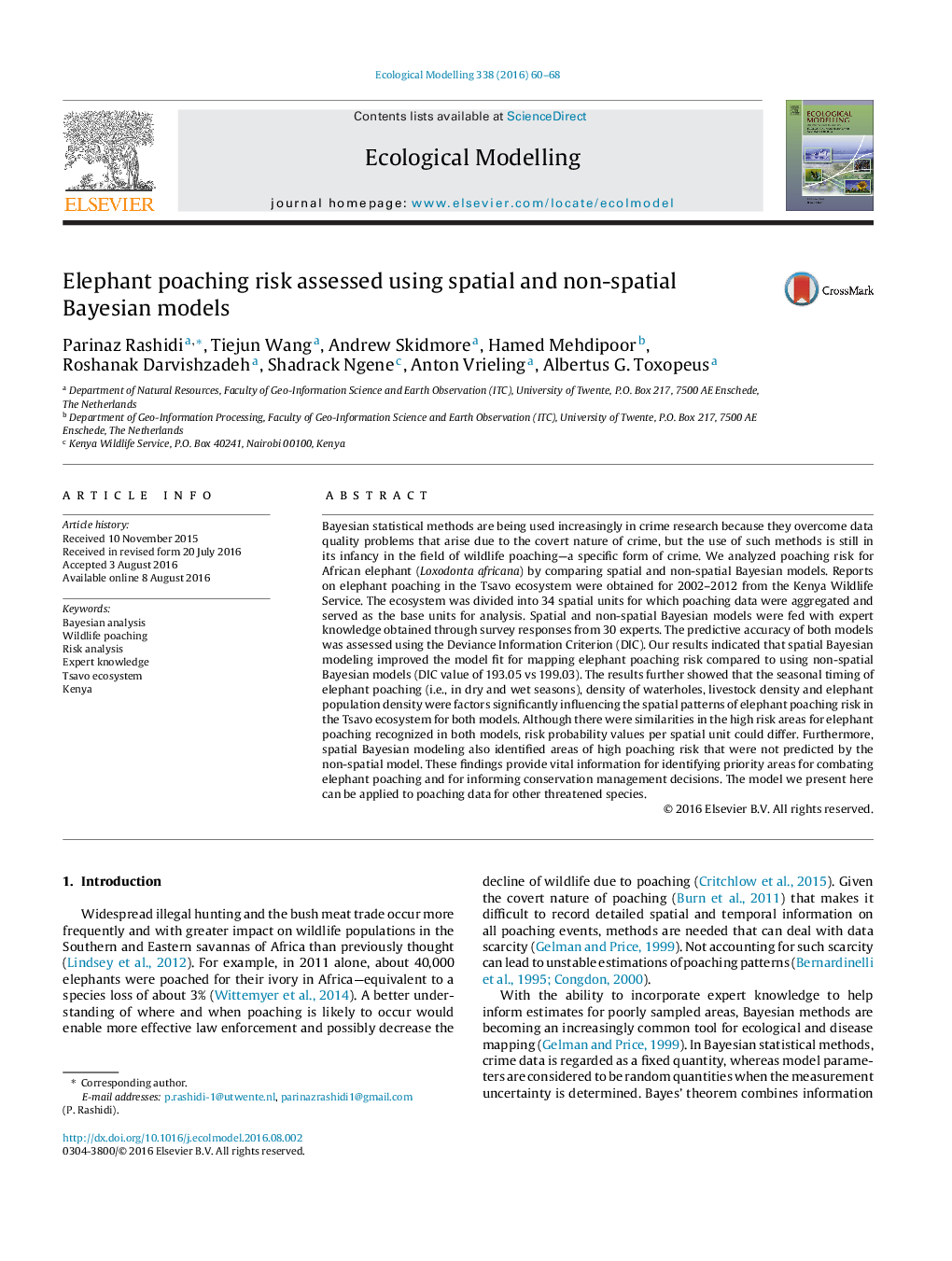| Article ID | Journal | Published Year | Pages | File Type |
|---|---|---|---|---|
| 6295999 | Ecological Modelling | 2016 | 9 Pages |
Abstract
Bayesian statistical methods are being used increasingly in crime research because they overcome data quality problems that arise due to the covert nature of crime, but the use of such methods is still in its infancy in the field of wildlife poachingâ¿¿a specific form of crime. We analyzed poaching risk for African elephant (Loxodonta africana) by comparing spatial and non-spatial Bayesian models. Reports on elephant poaching in the Tsavo ecosystem were obtained for 2002â¿¿2012 from the Kenya Wildlife Service. The ecosystem was divided into 34 spatial units for which poaching data were aggregated and served as the base units for analysis. Spatial and non-spatial Bayesian models were fed with expert knowledge obtained through survey responses from 30 experts. The predictive accuracy of both models was assessed using the Deviance Information Criterion (DIC). Our results indicated that spatial Bayesian modeling improved the model fit for mapping elephant poaching risk compared to using non-spatial Bayesian models (DIC value of 193.05 vs 199.03). The results further showed that the seasonal timing of elephant poaching (i.e., in dry and wet seasons), density of waterholes, livestock density and elephant population density were factors significantly influencing the spatial patterns of elephant poaching risk in the Tsavo ecosystem for both models. Although there were similarities in the high risk areas for elephant poaching recognized in both models, risk probability values per spatial unit could differ. Furthermore, spatial Bayesian modeling also identified areas of high poaching risk that were not predicted by the non-spatial model. These findings provide vital information for identifying priority areas for combating elephant poaching and for informing conservation management decisions. The model we present here can be applied to poaching data for other threatened species.
Related Topics
Life Sciences
Agricultural and Biological Sciences
Ecology, Evolution, Behavior and Systematics
Authors
Parinaz Rashidi, Tiejun Wang, Andrew Skidmore, Hamed Mehdipoor, Roshanak Darvishzadeh, Shadrack Ngene, Anton Vrieling, Albertus G. Toxopeus,
